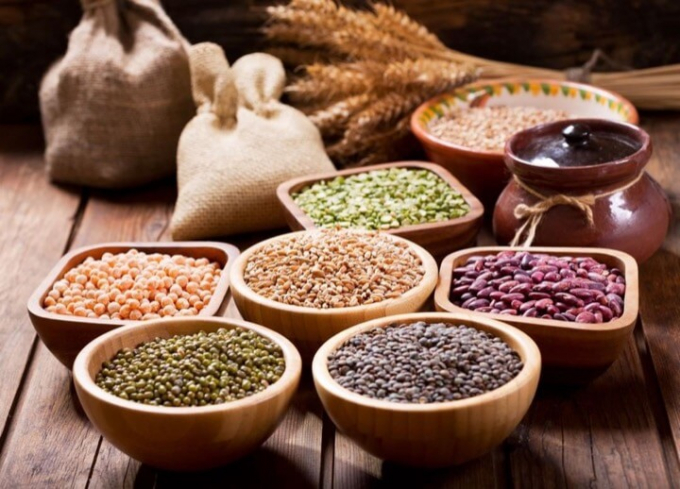November 27, 2025 | 22:04 GMT +7
November 27, 2025 | 22:04 GMT +7
Hotline: 0913.378.918
November 27, 2025 | 22:04 GMT +7
Hotline: 0913.378.918

U.S. agricultural exports have been on a wild ride the past few years, but be prepared for even more volatility, an ag official says.
"This (world ag trade) is not going to be smooth. The volatility we're going to see going forward, as a result of China and everything else going on, is something we all have to wrap our heads around," said Gregg Doud, immediate past chief agricultural negotiator with the Office of the U.S. Trade Representative.
"This is really important going forward," he said.
Doud spoke Feb. 23 in a webinar on "Ag Trade: Outlook on Global Markets and Negotiations." The event, open to the news media, was sponsored by the Oak Brook, Ill.-based Farm Foundation, which says it "accelerates practical solutions for agriculture."
Also on the panel were Kanlaya Barr, senior economist with John Deere; Cassandra Kuball, vice president of Michael Torrey Associates, a lobbying firm; and Sharon Sydow, senior economist in the Office of the Chief Economist of the U.S. Department of Agriculture.
"2020 was a really good year for U.S. ag exports, after a real slow start," said Doud, who recently joined Aimpoint Research as vice president of global situational awareness and chief economist.
China remains crucial for continued progress in ag exports. That goal became easier because, after recent trade negotiations, more than 4,000 U.S. ag production facilities now are eligible to export their products to China, up from about 1,500 eligible facilities before the negotiations, Doud said.
"This is a very big thing to keep in mind as we go forward. The improvements in market access we now have in place are going to treat us well," Doug said.
But the U.S. needs to "be competitive in world marketplace on prices, not just in China but everywhere," he said, noting that the weaker American greenback makes U.S. products more affordable.
Doug pointed to this crucial but sometimes overlooked development: Last year, China banned swill-feeding of hogs. Swill-feeding is cooked food waste, or table scraps, fed to hogs.
The Chinese government said swill-feeding was a major contributor to the spread of deadly African swine fever.
"Keep in mind that half the hogs in the world are in China, and maybe half those hogs at times were fed food scraps," Doud said. As China "expands more into Western-style (livestock) confinement operations, it's important to lay in food supplies" — some of it imported grains.
Sydow recapped recent USDA projections for strong 2021 U.S. ag exports.
But competition from Russia, Brazil and Argentina is strong and growing, requiring U.S. ag exports to become more competitive, she said, stressing that exports are essential for many U.S. ag commodities to continue growing.
Barr said she grew up in Thailand. When she left two decades ago, farmers there were "planting and harvesting rice by hand," using water buffalo. Today, technology and trade has changed how world ag operates.
World trade has helped to reduce poverty globally, and ag exports, in turn, are crucial to U.S. ag. About 20% of total U.S. ag production is exported, she noted.
Kuball looked primarily at the policy side of U.S. ag. Her employer, Washington, D.C.-based Michael Torrey, says it "has served companies and organizations who want their voices heard in Washington on a wide range of issues in agriculture, food and financial services. With experience in lobbying, coalition building, issues management and communications, our team specializes in building custom engagement strategies for every client."
Under the Biden administration, issues such as climate change and multilateral trade agreements will take on greater prominence. "Food and agriculture will be very much on the table," she said.
Value-added food products are increasingly important. "We're going beyond bulk (food exports)," and that needs to be considered in U.S. ag trade negotiations, she said.
AgWeek

(VAN) A new study reveals how the simultaneous effects of ocean acidification, salinity and loss of oxygen are making the world more fragile.

(VAN) Hopes are growing that the creation of the first 3D turkey gut model could be a turning point in the battle against the virulent blackhead disease.

(VAN) Tyson, America’s biggest meat supplier, plans to shutter one of its largest beef processing plants as the industry continues to struggle with low cattle supplies and political pressure from Washington.

(VAN) New FAO study shows how digital solutions are empowering farmers and fishers to prevent losses and build resilient agrifood systems.

(VAN) Brazil's COP30 presidency pushed through a compromise climate deal on Saturday that would boost finance for poor nations coping with global warming but that omitted any mention of the fossil fuels driving it.

(VAN) Poultry farmers in the UK have been warned that they could face one of the worst winters yet for bird flu.

(VAN) Prices of main-crop paddy have risen sharply, with jasmine rice hitting 16,100 baht per tonne — the highest level in years.